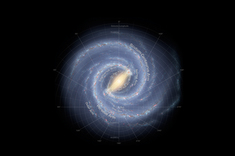Skywatcher Rick Moore took this image when he was stargazing at the Platte River, in Louisville, Nebraska.
Sometime the right shot just appears.
Skywatcher Rick Moore took this image when he was stargazing at the Platte River, in Louisville, Nebraska. While he didn’t plan the shot, he did walk to a darker location to illuminate the Milky Way and bridge.
“I was stargazing and noticed the Milky Way starting to appear. so I packed up my camera and headed to a spot that overlooks the river. I walked about a mile in the dark until I could get this shot,” Moore wrote in an email to Space.com. [Check out more amazing Milky Way photos by stargazers ]
The Milky Way galaxy , which contains our own solar system, is a barred spiral galaxy with roughly 400 billion stars. The stars, along with gas and dust, appear like a band of light in the sky when seen from Earth. The galaxy stretches between 100,000 to 120,000 light-years in diameter.

0 of 10 questions complete
The image is 20 images taken at varying exposures and settings and then blended together with Light room 5 and Photoshop 7. Multiple exposures are made to collect enough light for an image that would otherwise not be evident to the eye.
Moore used a Canon T3i, 18-55 lens @ 18, Manual focus, on ” TV” mode, at ISO 400-3200, on a tripod, 5-15 sec shots on a 10 sec timer between shots.
Editor’s note: If you have an amazing skywatching photo you’d like to share it with Space.com and our news partners for a possible story or image gallery, please contact managing editor Tariq Malik at spacephotos@space.com.
Follow us @Spacedotcom , Facebook and Google+ . Original article on Space.com .

Comments are closed.